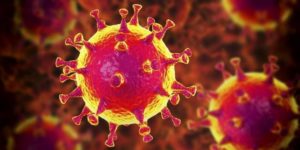Overpopulation: mechanism at negative retroaction 3/4 The latter example explains what happens when a population comes into contact with a new virus and the system or predator-prey, parasite – host sets haven’t yet developed homeostasis. Before getting to balance, mortality may be very high, so that, if a population that had already been in contact with the virus, is present in the ecosystem, the species that comes into contact with it, for the fitst time, may completely disappear.
Overpopulation: mechanism at negative retroaction 2/4 Now let’s try to understand better the functioning of the mechanism at negative retroaction. For this we’ll make use of two examples: a natural one and another in which human intervention is basic. In the first case the number of many rodents, Lemmings among them, increases up to a certain point beyond which an epidemic of some kind that kills almost the whole population, occurs. The increase starts again and is followed by another epidemic and so on[1], [2].
Rebellious Angels: the fundamental unity of selection, and so of egoism, is neither the species nor the group and not even the individual, but the gene, the unity of heredity (Richard Dawkins-The Egoist gene) The Child as a Product. There is no better investment for any community than put some milk into children(Winston Churchill) The Intelligent Virus: H.I.V. Le mal de vivre: “Oh Critone, we owe Asclepious a cock; give him it, and try not to forget it” (Plato, Fedone LXVI)
The Intelligent Virus The appearance of HIV and the diffusion of AIDS epidemic don’t depend on chance but are attempts by nature to put a check on the exponential growth of human population(overpopulation). We couldn’t explain, otherwise, the remarkable tactical and strategical abilities HIV proved in overcoming the endurance of his host, in defending himself against his antibodies and in the preservation and world spreading of a viral epidemic(AIDS) turned into pandemia.
Search
Recent Post
Follow on Facebook
Find us on Google Plus
Follow on Twitter
Stories Archive
- Blog (132)
- child labor (10)
- child Prostitution (6)
- Climate Change (20)
- depression (53)
- Depression and suicide (51)
- Environmental catastrophes (22)
- epidemics (44)
- Genetic hypothesis of suicide (47)
- HIV (24)
- Leonardo Da Vinci (8)
- overpopulation (108)
- pedophilia (7)
- Serial Killer (33)
- Suicide Genes (46)
- suicides (56)
- The child as a product (10)
- the intelligent virus (106)
- Uncategorized (59,869)
- Unexplained aggression (36)
- You Tube (6)












